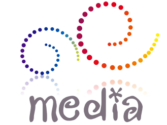To create a successful, easy-to-use website it is vital to plan carefully and adopt good practice.
Have you considered the purpose of your website?
The purpose of your website is primarily to provide visitors with an easy to use resource of up-to-date information and services. Your website provides an opportunity to engage and inform them. The success of your website will best be achieved by understanding who these visitors are, and what nature of information is relevant to them. It is essential to therefore consider how your target audience would use your website – what they expect to find and how easily they can find it.
Steps in Creating Content for Your Site
Doing the Writing for the web
People do not read websites in the same way they read printed books or magazines. It is unusual for a visitor to read text on a website verbatim. The tendency is for readers to scan through content. You can get your information across more easily by:
• Writing in short easy to digest paragraphs (typically one idea per paragraph).
• Use bullet points where possible.
• Try placing a summary at the top of the page—this helps people to decide whether to read the more detailed information.
• Try emphasizing key words in your text (e.g. by making them bold)
• Try halving the word count – less is sometimes more!
Navigation Menu
One of the key points in creating a successful website is navigation – your users should be able to find what they want quickly and easily. Create titles for the sections of your website that are clear and make sense – nothing too cryptic! Have a look at other successful websites and note how they use simple and clear Page and Section titles to help their visitors.
While planning your website, create a map of all the content you wish to include and organize it so that all information is contained in a clear structure.
Ensure that the navigation menu appears on all pages of your site.
Responsibility
All information that goes on the website is the responsibility of the people developing it. If you have several people adding to the website it is recommended that someone has an overall monitoring role to check content is acceptable.
The Right Design for Your Website
The design of your site should not take centre stage. It is advisable to keep designs quiet and simple. Visitors are coming to your web pages because they are interested in its content. If they are aware of the design its usually a bad sign!
Below is a list of design recommendations to consider when creating your website:
Use plain background colours – either white or pastel colours
Make sure font colours compliment and are clear against the background
Keep all text the same colour/font type throughout the website.
Think twice about animated images – They could possibly distract the user; the meaning of the page may become lost. They will increase the time the page will take to download onto a users computer. If an animated picture moves too suddenly it could be harmful to people with epilepsy or similar disabilities. The same also applies to flashing text.
Choice of font is important. Sans serif fonts work best on screen, examples include: Arial, Verdana, Helvetica, Garamond, Courier.
Research has also found that people with dyslexia can read the font “comic sans” more easily.
Should you use sounds on your web pages
Sound files require time to load and will slow down your website. Sounds, especially where visitors have no control over them, can also be very irritating.
If sound is a necessary element of your website it is a good practice to tell visitors how to turn it down, or off. It is even more courteous to invite visitors to turn the sound on rather than off.
Effective Image Placement
Images, particularly of organization members, can help to make website seem less impersonal.
It is important to optimize or compressed pictures for the internet. This can greatly reduces the download (waiting) time for visitors to your web page. Optimizing can be done using image editing software like Photoshop or CorelDraw.
When using photographic images or graphics on your website always provide a description of the image/graphic for the benefit of visually impaired visitors and search engines. This description is placed in an ‘ALT TAG’ (alternative tag). When the computer mouse goes over an image its description will appear.
If you require a large number of images on your site, one solution is a photo gallery with a visual menu of thumbnail images. Users can then choose to view a larger image by clicking the thumbnail.
We hope that thinking about the above issues will help you in creating a truly representative and user-friendly site for your business or organisation.

Good read for anyone thinking of developing their web.